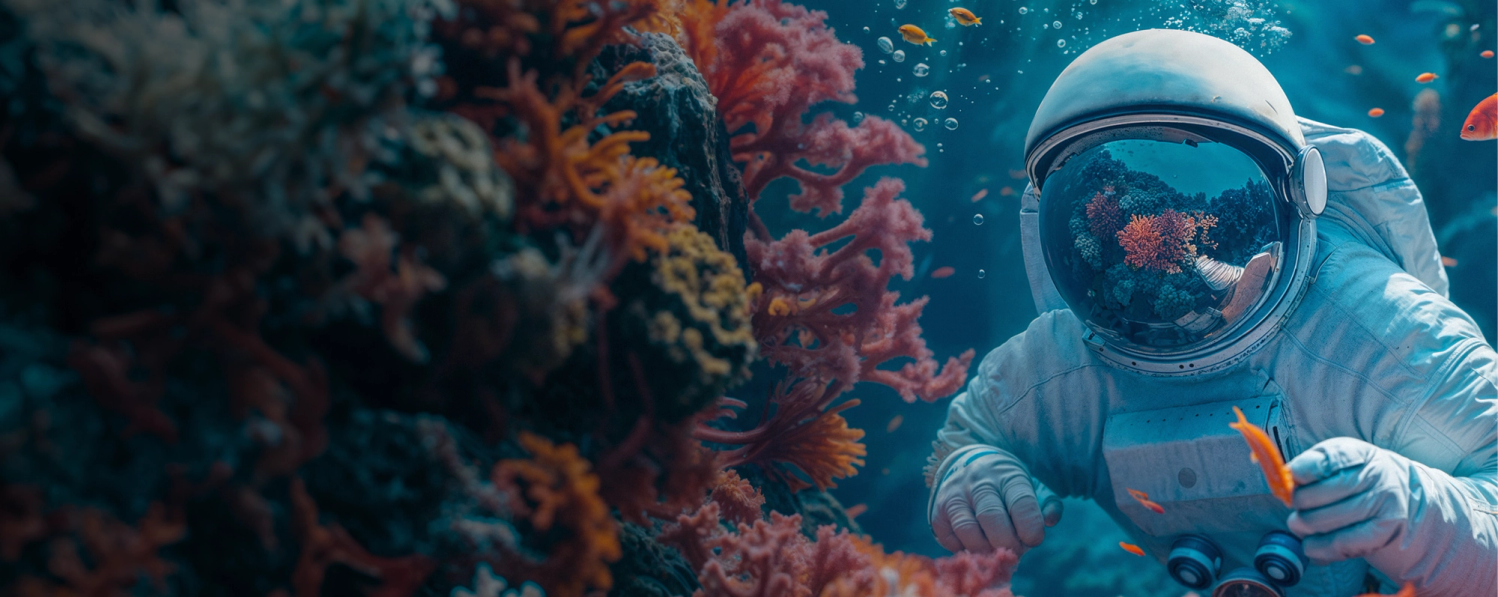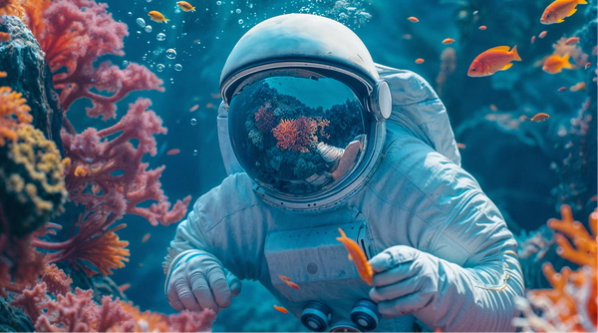Not Using AR? Here's Why You Should [Examples Included]

It’s no illusion, augmented reality (AR) is already at massive scale and it’s growing exponentially. Not just because it feels shiny and new, but because it’s incredibly engaging—so engaging that it increases ad performance; therefore, lowering campaign costs.
Campaigns with AR overlays have 3X the brand lift and cost nearly 60% less than traditional campaigns. Meta found that out when it partnered with ten of its advertisers to determine the impact of AR on campaign success.
By 2028, the market for AR will be an estimated $330 billion—21X its 2020 $16 billion valuation. The opportunity is here. The question is which brands will seize it?
Is It Time to Start Using AR?
Too early? Too late? Just right? It's the Goldilocks conundrum of AR. As the story unfolds, you'll find that it's no longer too early. The timing's just right, and you definitely don't want to be too late (no one wants to be there when the bears get home).
Contemplating what's best for your business and your brand? In this article, we'll cover the following:
What is Augmented Reality (AR)?
Unlike its close friend virtual reality, which is 100% generative and 0% physical, augmented reality interacts and overlays with traditional or business-as-usual (BAU) creative through text, graphics, sounds and other enhancements.
In plain English, think Snapchat filters and lenses, Zoom filters that let you don a spiffy mustache or the sofas you viewed in 3D before committing to your statement piece. Each of these is a form of AR that adds greater richness and depth to customer experiences. You’re still you, connecting through the screen.
But now, the creative connects back.
AR's role in immersive reality
Spatial computing, mixed reality (MR), AR and virtual reality (VR) are the technologies shaping the future of immersive reality and, subsequently immersive experiences.
Partially immersive, AR opens the door and lays the groundwork for fully immersive VR experiences, where the creative is 100% of the journey.
The overlays AR provides will become the norm for tomorrow's VR.
Source: Dan Moller, "Getting Ahead of the Curve With AR"
Why AR is a Powerful, Effective Marketing Technique
“Building for today prepares you for the future. AR is already at scale today and consumers want even more.”

Dollar-for-dollar AR campaigns boast better performance and higher engagement than static and traditional ads. After all, would you rather look at a picture of someone driving a car, or put yourself in the driver’s seat?
Then there’s the fun factor—94% of business leaders say “fun” is the main reason people use AR. Humans love to play and feel connected. AR makes this possible like never before.
The marketing potential for AR is very real—especially on social channels that leverage immersive technologies native to modern mobile devices. There's a reason it's growing at a faster rate than most other disruptive technologies.
The power of AR as told by one of Meta's very own experts
AR Specialist Dan Moller explains how he responds when people ask, "Is it too new, too gimmicky and should I really be thinking about this?"
3 Real-World Examples of Successful AR Campaigns
Which brands have run campaigns that integrate AR? Moller presented examples from IKEA, Paramount Pictures and Meller at the Standout Creative Summit. (See his full presentation.)
Example #1 — IKEA hits a high note with music creators
IKEA launched its OBEGRÄNSAD collection inspired by and for musicians and creators of all kinds with a multi-stage campaign.
First, a music-creative selfie effect built excitement and set the vibe. As customers got more engaged, a second-world effect let them place pieces from the collection in their own space.
The result was a 69% lift in awareness, 12% increase in ad recall, double the click-through rate and costs that were 61% lower per recall.
Example #2 — Paramount Pictures put a new generation in the cockpit
In a rogue approach to promoting Top Gun: Maverick, Paramount Pictures gave younger audiences, who may not have seen the original 1986 film, the chance to star in the 2022 trailer.
Not only did fans swipe up to test their skills, ad recall increased 15 points, intent grew 5.5 points and brand awareness gained 5.1 points.
Example #3 — Meller tries AR on for size
The Spanish sunglass brand Meller took show-and-tell to a new level. Using AR to let people try a range of sunglasses, it doubled intent, quadrupled incremental purchases and lowered cost-per-purchase 74%—all during the traditional off-season.
Charting a Course to the Future Today
There are expected AR use cases, such as for retail and gaming. However, immersive design is appearing in many surprising places.
SailGP—Dipping way more than its toes into the water
“If you can’t explain it to my kids who’s winning, no one’s going to watch it.”

Redefining sailing, SailGP is using AR to make the sport more accessible and engaging. If you’re at an in-person event, you’re physically surrounded by the sights, sounds and energy of it all.
With AR, SailGP helps virtual attendees get onboard. Unless you’re a seasoned sailor, the sport can be hard to understand. To overcome this, the company projects the race course and live data from the boats during the live stream, telling the story of what’s happening on the course and inside each boat.
It’s not the fans who benefit from this technology, the virtual course markings leave no imprint on the water or the environment. Sponsor logos are overlaid onto the course, with no signage or waste that needs to be removed later. There are also no travel costs and a lower carbon footprint as all the immersive technology is activated remotely.
vFairs—Keeping it real in-person and online
“I’ve seen amazing success from virtual events. In fact, there are things that sponsors couldn’t do in person.”

Source: vFairs
Making lemonade out of lemons, when virtual events were the only events for a few years, this space became a proving ground for AR. While a virtual event space or conference center may seem so common now, a few short years ago, it wasn’t.
Now it’s also common for events to be both in-person and virtual, with unique experiences for both audiences. While in-person attendees might have greater access to the buffet and the all-coveted swag, everyone can visit the booths, go to breakout sessions, network and more.
As the ability to customize grows, brands can further make these spaces their own. For instance, one client recreated an entire luxury resort, complete with native birds and wildlife. However, the virtual sensation of sand between your toes is still a few years off.
Starting and Scaling AR
You don't have to have AR experts in-house, savvy early adapters often work with outsourced partners, like Superside, to test and experiment with AR—without having to invest in-house or divert hours from any other critical internal initiatives.
There’s no time like the present
Whether you’re just getting started or ready to scale your AR efforts, we’ve got the experts and processes you need to create today's standout customer experiences—all while preparing you for the future.
Michelle enjoys learning from and empowering ambitious marketers and creatives focused on scaling design and fueling growth.🚀 With more than two decades of experience, she’s worked at both agencies and in-house teams at companies of all sizes in the United States and Canada. She began her career as an advertising copywriter, remastering these skills as a content marketer and becoming a subject matter expert on everything from frozen pies and financial statements to SaaS and now CaaS. Connect with her on LinkedIn.















